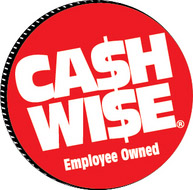Happy February All! Tis the season of love and all things hearts! February celebrates national heart disease awareness month! Did you know that nearly 1,000,000 lives are taken each year? The good news is that you can play a large role in treating and even preventing this disease! Read on for some health tips from our supermarket dietitians as well as recommendations for the American Heart Association.
Consume WHOLE grains
• Many whole grains are good or excellent sources of dietary fiber. Most refined grains contain little fiber.
• Dietary fiber from whole grains, as part of an overall healthy diet, may help improve blood cholesterol levels, and lower risk of heart disease, stroke, obesity and type 2 diabetes.
• Dietary fiber can make you feel full, so you may eat fewer calories. Including whole grains in your diet plan may help you reach or manage a healthy weight.
Choose whole grain foods that contain one of the following ingredients first on the label’s ingredient list:
• whole wheat,
• graham flour,
• oatmeal,
• whole oats,
• brown rice,
• wild rice,
• whole-grain corn,
• popcorn,
• whole-grain barley,
• whole-wheat bulgur and whole rye.
Being brown in color, saying the word “wheat” and having nuts and seeds doesn’t always mean “whole grain.”
Each person should strive to get at least 25 grams of fiber each day.
Eat the RAINBOW
Make sure that you are consuming fruits and vegetables at every meal! Fruits and vegetables are high in fiber, vitamins and minerals. Eating a variety of fruits and vegetables may help you control your weight and your blood pressure. They are also a great source of antioxidants, which help to reverse cell damage. Be sure to watch for added sugars in canned fruits always choose in “100% juice” or “no added sugar.” When choosing canned veggies make sure they say “no salt added,” or drain and rinse than for 2-4 minutes and you can reduce the sodium by up to 41%.
Limit SATURATED fats and Include heart-healthy fats

Reduce Sodium and Salt intake
The American Heart Association recommends no more than 2,300 milligrams (mgs) a day and an ideal limit of no more than 1,500 mg per day. Salt can increase the risk for high blood pressure (AHA). “More than 75 percent of the sodium Americans eat comes from some processed, prepackaged and restaurant foods – not from the salt shaker” (AHA).
Here are the approximate amounts of sodium in a given amount of table salt:
- 1/4 teaspoon salt = 575 mg sodium
- 1/2 teaspoon salt = 1,150 mg sodium
- 3/4 teaspoon salt = 1,725 mg sodium
- 1 teaspoon salt = 2,300 mg sodium
Here are some more tips for the American Heart Association:
- You can find the amount of sodium in your food by looking at the Nutrition Facts label. The amount of sodium per serving is listed in milligrams, abbreviated “mg.” Check the ingredient list for words like sodium, salt and soda. The total sodium shown on the Nutrition Facts label includes the sodium from salt, plus the sodium from any other sodium-containing ingredient in the product (for example, ingredients like sodium nitrate, sodium citrate, monosodium glutamate [MSG], or sodium benzoate).
- Remember to take note of the serving size on the Nutrition Facts label. If your portion size equals two servings of a product, you’re actually eating double the sodium listed.
Watch ADDED Sugars

“Sugars in your diet can be naturally occurring or added. Naturally occurring sugars are found naturally in foods such as fruit (fructose) and milk (lactose). Added sugars are sugars and syrups put in foods during preparation or processing, or added at the table. Added sugars contribute zero nutrients but many added calories that can lead to extra pounds or even obesity, thereby reducing heart health.
To tell if a processed food contains added sugars, you need to look at the list of ingredients. Sugar has many other names. Besides those ending in “ose,” such as maltose or sucrose, other names for sugar include high fructose corn syrup, molasses, cane sugar, corn sweetener, raw sugar, syrup, honey or fruit juice concentrates” (AHA).
Stay hydrated
Sometimes we can mistake the feeling of dehydration for hunger. This can cause us to over eat, thus cause us to gain weight and then be overweight which is a risk factor for heart disease. Remember to get at least 64oz of water every day!
Lead an active lifestyle
AHA Recommendation:
For Overall Cardiovascular Health:
- At least 30 minutes of moderate-intensity aerobic activity at least 5 days per week for a total of 150 OR
- At least 25 minutes of vigorous aerobic activity at least 3 days per week for a total of 75 minutes; or a combination of moderate and vigorous-intensity aerobic activity AND
- moderate to high-intensity muscle-strengthening activity at least 2 days per week for additional health benefits.
For Lowering Blood Pressure and Cholesterol
An average 40 minutes of moderate to vigorous-intensity aerobic activity 3 or 4 times per week. But remember something is always better than nothing. Try to find simple ways to add extra steps into your day such as parking further away at work, taking the stairs, walking around the building on breaks, walking extra laps at the mall while shopping, ice skating, skiing, sledding, snow shoeing- since it’s winter- really anything that has you on your feet.
Peace and Wellness,
Ashley Kibutha, RD, LD
Coborn’s Registered Dietitian










